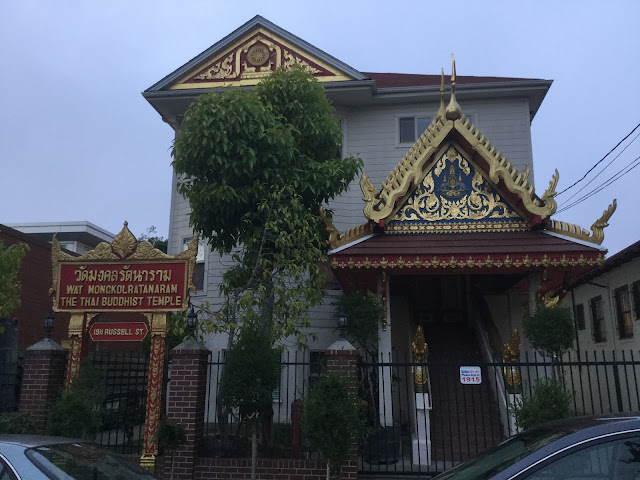ประวัติวัดมงคลรัตนาราม เบอร์กเล่ย์
วัดมงคลรัตนาราม สร้างเมื่อปี ๒๕๒๑ โดย"หลวงพ่อมงคลเทพโมลี" พร้อมศิษยานุศิษย์จำนวนหนึ่ง โดยการซื้อบ้านและที่ดิน เลขที่ ๗๙๔ Grand Ave South San Francisco เพื่อสร้างเป้นวัดและปฏิบัติศาสนกิจของพระภิกษุสงฆ์และเป็นที่ยึดเหนี่ยวจิตใจของชาวพุทธ อันเป็นสถานที่ให้ชาวพุทธมาให้ทาน รักษาศีล เจริญจิตภาวนา เป็นวัดที่ ๒ ของการมาปักธงชัย"พระธรรมจักร"ในสหรัฐอเมริกาของหลวงพ่อมงคล (วัดแรกคือวัดไทยแอลเอ)
HISTORY
Wat Mongkolratanaram (Temple) began out of the desire to form a local Buddhist temple to support the vital spiritual and cultural needs of the growing Thai and Southeast Asian Buddhist community in the San Francisco Bay Area. In 1978, a group of volunteers formed a small Temple committee and invited two visiting monks from Thailand to provide spiritual guidance to the community and leadership through the temple building process. Three years later, the dedication and hard work of this initial committee resulted in the development of the Temple into a Thai Buddhist and cultural center, the establishment of the Temple’s permanent home at its current location on Russell Street in the City of Berkeley, and the recognition from the State of California as a nonprofit organization. In 1993, the Temple was recognized as an official religious institution by the City of Berkeley. In 2001, after significant renovations to the Temple building, the Temple was formally recognized as an official Thai Buddhist ubosoth, or chapel of worship, in full accordance with Therevada Buddhist doctrine. Since its inception 30 years ago, the Temple has grown in response to meet the growing needs of its community. Presently, the Temple is lead by the guidance of six resident monks serving to meet the community’s spiritual and cultural needs.
SPIRITUAL AND CULTURAL SERVICES
The establishment of Wat Mongkolratanaram was crucial and its continued existence is crucial to the spiritual and mental well being of the local Thai and Southeast Asian Buddhist community, especially for those so far away from their original homeland. Interest in the Temple’s spiritual services has also grown to encompass those from the larger community. The Temple provides a spiritual sanctuary to study and practice Buddhism through meditation, prayer and the guidance of resident and visiting monks. The Temple serves as a place to celebrate and receive blessings for joyous cultural and personal occasions such as religious holidays, weddings, and graduations. The temple also serves as a refuge during times of crisis such as the lost of a loved one or support during times of displacement. This was especially
Application for a Broader Land Use Permit
apparent after the traumatic 1989 San Francisco Earthquake. During this time the Temple became a support center providing access to shelter, food and counseling for the local Thai and Southeast Asian community affected by this natural disaster. The Temple also held fundraisers and donated the proceeds to the United Way to aid in the 9/11 tragedy in 2001 and contributed to the Tsunami relief efforts in 2004. From birth to death, the lives of Buddhists cannot be separated from the life of their temple.
Not only does the Temple serve as a place of worship, it serves as an equally vital cultural and social center. The Temple provides a unique opportunity for the community to preserve Thai cultural heritage by engaging in traditional customs and celebrations. It is a place where people meet, exchange views, share events of their lives and offer support to each other. To foster this community fellowship, the Temple sponsors celebrations for cultural events and holidays and facilitates Sunday services.






ไม่มีความคิดเห็น:
แสดงความคิดเห็น